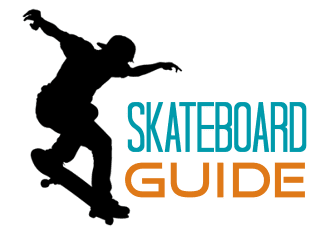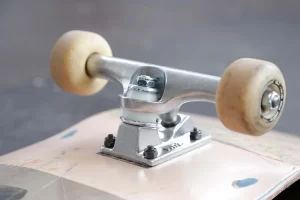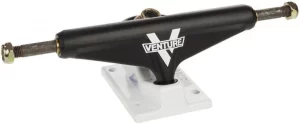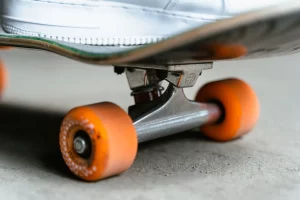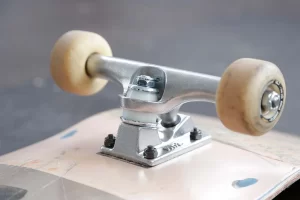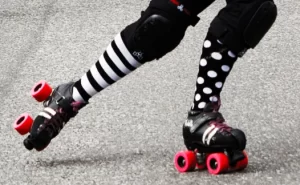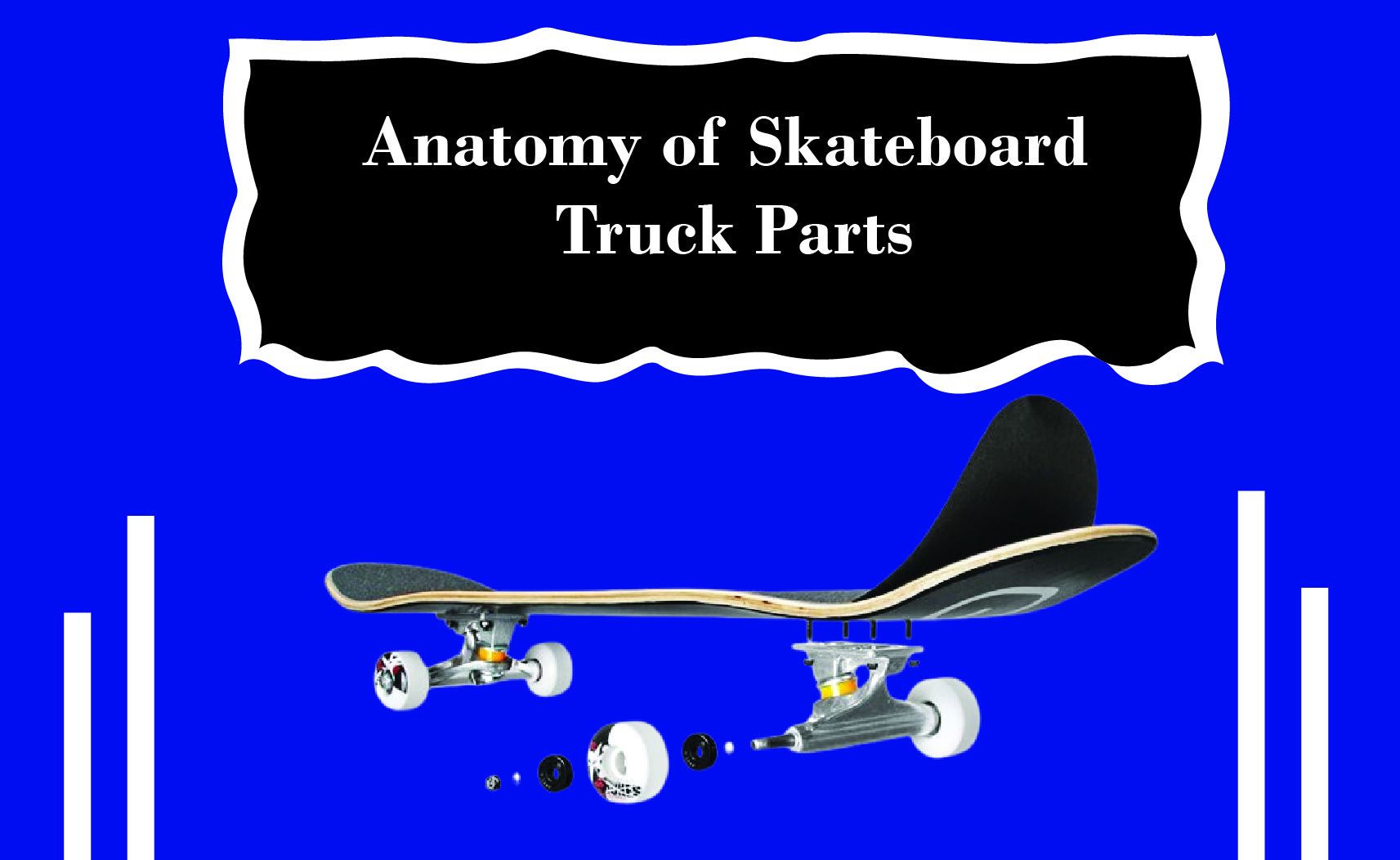
Understanding your skateboard means getting to know what lies beneath your deck—and that’s your trucks. A beginner often neglects truck parts; however, they dictate how the board turns, grinds, and bears weight. Every action, from cruising to technical tricks, requires a different skateboarding performance, which is why skaters need to understand the components of a skate truck.
In this comprehensive guide, we will break down parts of a skate truck, how each component works in tandem, and what factors to think about when replacing or upgrading them.
Breakdown of Skateboard Truck Anatomy
Functional Importance of Each Truck Part – A bar chart showing how vital each part is to overall truck performance.
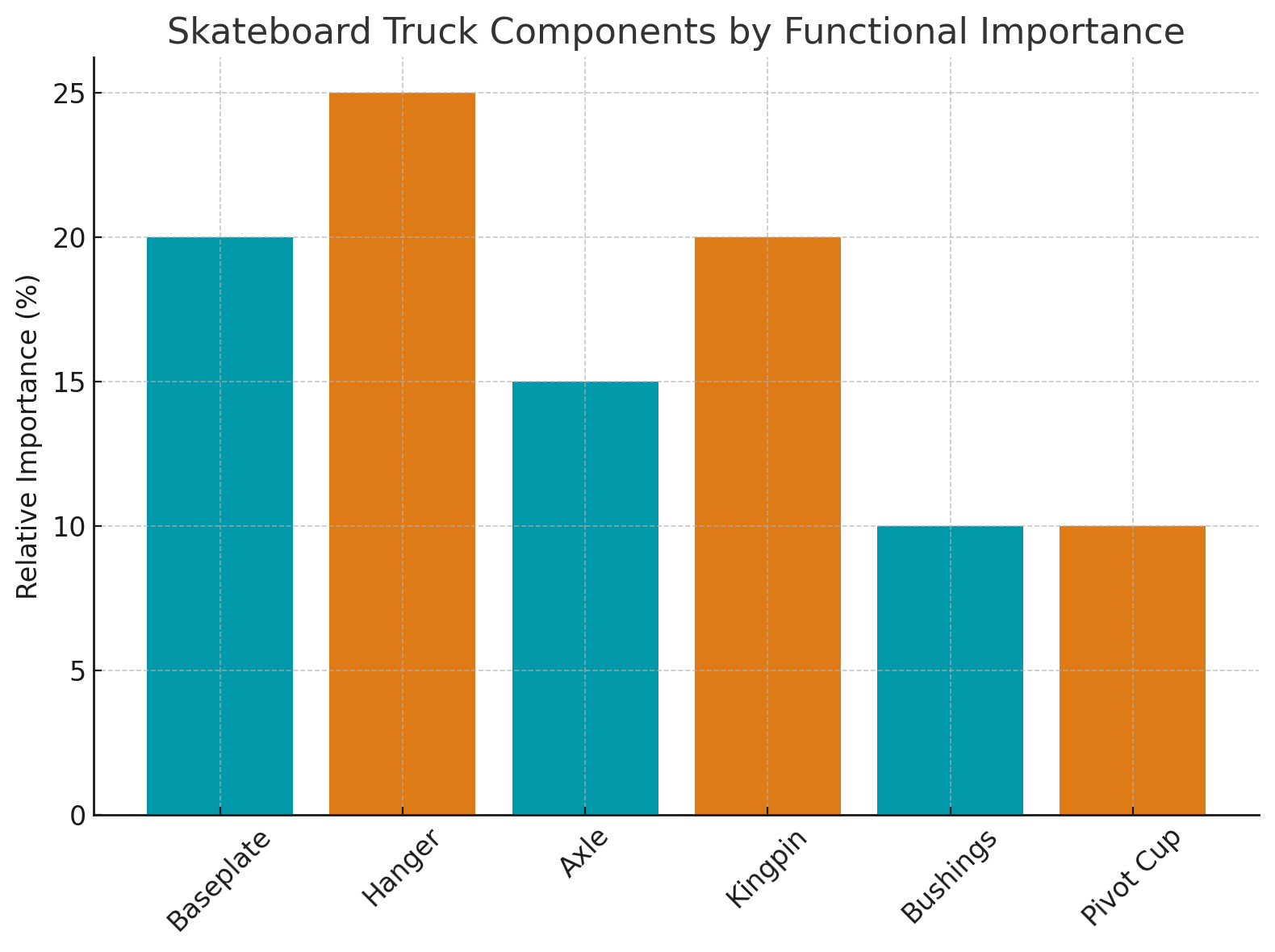
-
The Baseplate
The baseplate is the flat metal part of the truck, bolted directly to the skateboard deck. In other words, it is the plank for the skateboard and fixes all other parts.
Key Info:
- Usually made of aluminium alloy, responsiveness and compliance of the skateboard.
- Spurs resistance on the kingpin, pivot cup, and. Where the hanger rotates.
-
The Hanger
The hanger has the most sizable and salient feature of a skateboard truck. It is the T shaped structure the axle runs through.
Why It Matters:
- Absorbs the majority of the impact
- Factors on the turning radius and performance grinding
- Heavier hangers have more stability, while lighter hangers make it easier to perform flip tricks.
-
The Axle
The skateboard axle goes through the hanger with the long shaft extending beyond the sides to secure the wheels.
Quick Details:
- It should be about the same width as the deck
- A poor fit on diameter, like a misaligned axle width, can cause instability.
- Typically made of steel.
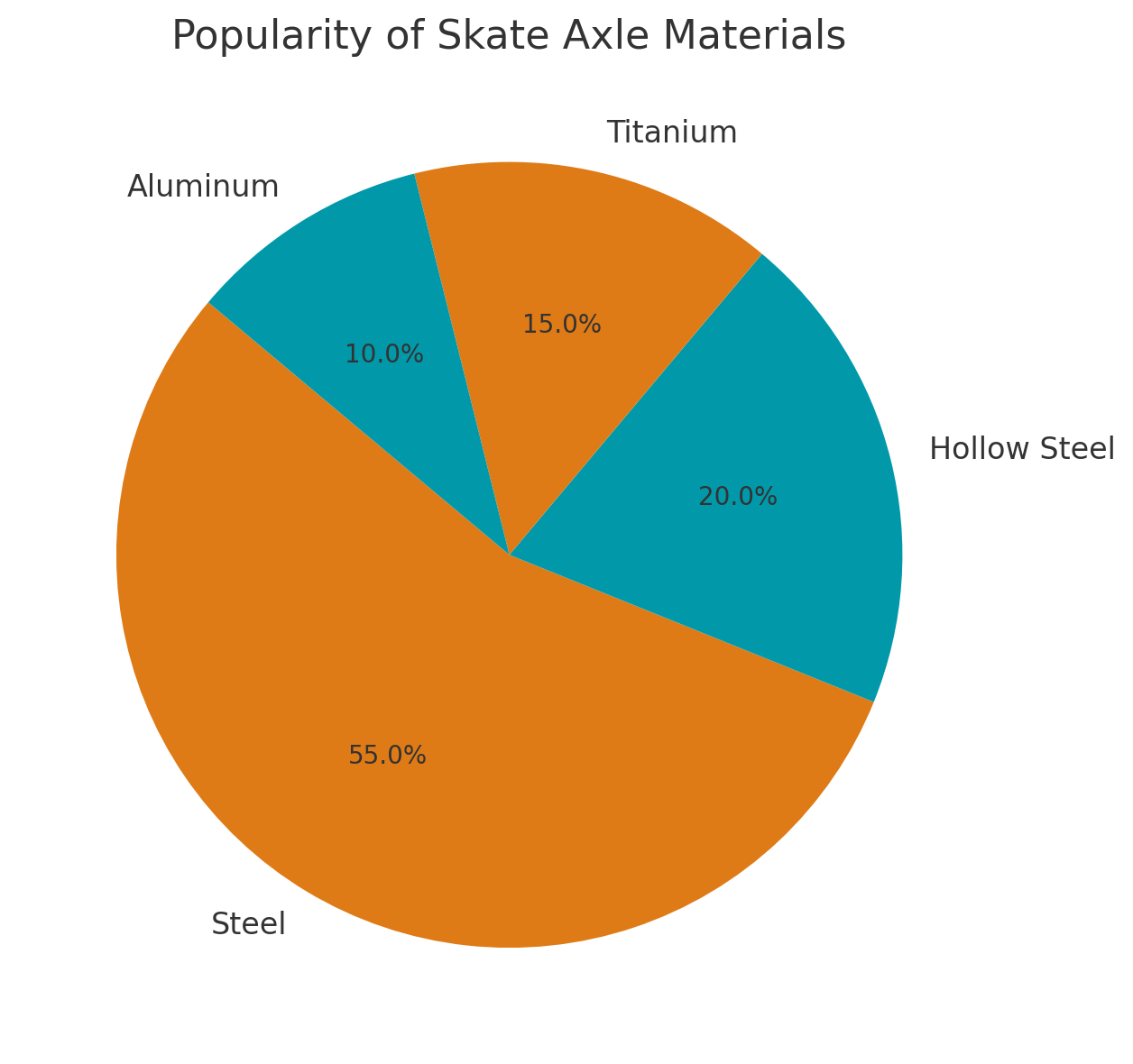
| Deck Width (in) | Axle Width (in) | Truck Size |
| 7.5 – 7.75 | 7.5 – 7.75 | 129mm |
| 7.75 – 8.0 | 7.75 – 8.0 | 139mm |
| 8.0 – 8.25 | 8.0 – 8.25 | 149mm |
| 8.25 – 8.5 | 8.25 – 8.5 | 159mm |
-
The Kingpin
This bolt goes all the way through the truck and holds it together while everything attaches to the axle port and screws down flush with the baseplate retaining the bushings and bearing structure.
Types of Kingpins:
- Standard Kingpins: these are your everyday or common kingpins used on traditional skateboarding
- Inverted Kingpins – Kingpins are more known in setups powered by grinding or low-profile setups.
-
The Bushings
Bushings are rubber rings that enable you to steer the skateboard more easily than it should. They Bushing allows the skateboard be able to turn to a high degree smoothly.
Bushings Chart:
| Type | Durometer (Hardness) | Best For |
| Soft | 78A – 90A | Tight turns, carving |
| Medium | 91A – 96A | All-around performance |
| Hard | 97A+ | Stability, speed |
-
The Pivot Cup
In the baseplate is where the pivot cup is located, and it is a rubber cup with a tiny shell that seats the poke point of the hanger. This puts a limit on the amount of force that can be used and makes the truck turn way smoother.
What are the Reasons for an Upgrade?
- A worn pivot cup can lead to “sloppy” truck performance
- Aftermarket parts often enable greater maneuverability
Other Minor Components of Skateboard Trucks
- Axle Nuts: Secure the skateboard wheels
- Speed Rings: Serve to lessen friction opposing the skateboard’s bearings and hanger
- Washer Cups: Assist in capturing middle bushing positions situated between them
How Do All These Skateboard Truck Parts Work Together?

Every constituent is crucial. The hanger and axle manage the skateboard’s weight and movement. At the same time, the deck gets attached to the base plate and kingpin, and the bushings allow for turning, which, in combination with maintenance, provides the best quality to ride the skateboard.
Choosing the Right Skateboard Truck Parts: Key Considerations
-
Skate Style
Technical suggest cruisers go for hard bushings paired with lower-level trucks labeled soft, low riders, while street skaters would likely use higher ones instead.
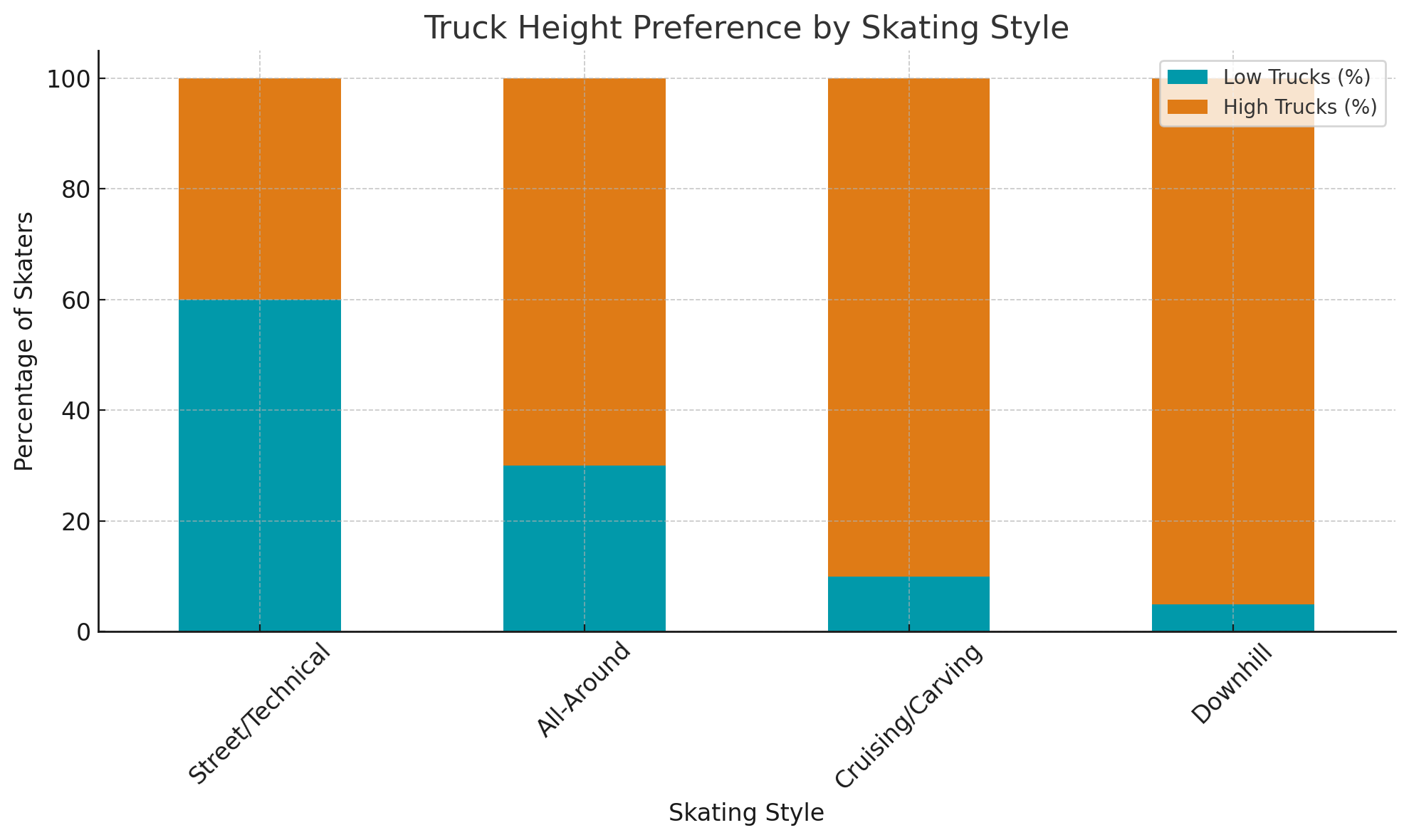
-
Deck Width Compatibility
Your axle width must always be decked, meaning a matched one counteracts the chance of wobbling and wheel biting.
-
Weight and Material
Flipping tricks benefiting from lightweight components such as titanium axles are balanced by having steel hangers, making the supporting frame lose durability.
Popular Aftermarket Options
Here are some trusted brands and what they’re known for:
| Brand | Specialty |
| Independent | Heavy-duty, pro-grade trucks |
| Thunder | Lightweight and responsive |
| Venture | Low-profile and stable |
| Tensor | Ultralight with unique geometry |
Maintenance Tips for Skate Truck Parts
- Balance turning movement by tightening or loosening the kingpin
- Replace bushings when they flatten or crack
- Ensure motion is smoother by lubricating the pivot cup
- Ensure skateboard safety by checking axle nuts frequently
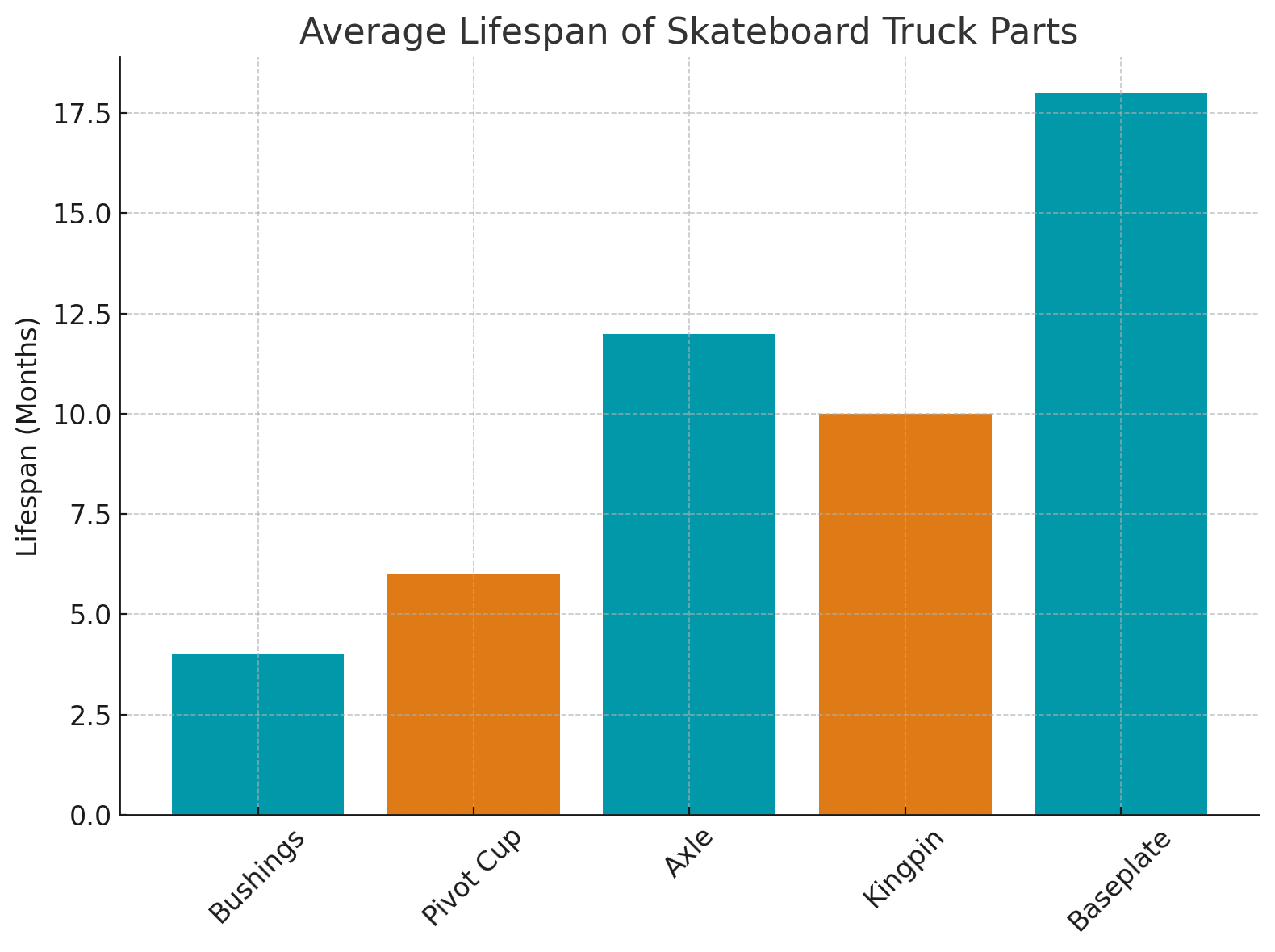
Common Questions About Skateboard Truck Components
- What is every part of a skateboard truck called?
A standard skateboard truck includes the baseplate, hanger, axle, pivot cup, bushings, and kingpin. These skateboard truck components work together to support turning, grinding, and impact absorption.
- What are the different types of skate trucks available?
Low-profile, high-profile, standard and reverse kingpin are all examples of skate trucks. Each kind of skate truck has an impact on how sharp a turn the skaters can take, as well as the height and how stable the skateboard is. Select your trucks based on your style, whether cruising, street, or downhill.
- What does the pivot cup do on a skateboard truck?
The pivot cup serves as an impact and friction padding at the baseplate pivot point. Smooth turning and minimal gaps are other functions of a pivot cup. Skateboarding is hard to do cup components bring gapping and unreliability.
- How to replace a kingpin bolt on a truck?
The bushings and hanger are all strapping components affixed to the truck kingpin bolt. If that happens to be bent or snagged it will have to be replaced with a bolt of suitable size, head over to a skate truck kit or order it online.
- Is there a bushing durometer chart to help with selection?
Yes. The bushing durometer chart helps determine the right hardness for your skating style:
- Soft (78A–90A): carving, tight turns
- Medium (91A–96A): all-around
- Hard (97A+): tricks, stability
- How do you maintain skateboard trucks for a long time?
To maintain skateboard trucks, look after the kingpin and axle nuts and regularly check for worn-out bushings or pivot cups. Depending on your ride preference, either loosen or tighten the hardware. Remove grime buildup after riding dirty or wet areas.
- Is there a diagram showing all the parts of a skate truck?
Parts of a skate truck diagram do exist, and it neatly shows the baseplate, axle, kingpin, bushings, pivot cup, and hanger. You can find a number of guides and manuals available on the internet that assist a novice in learning the parts of skateboard truck parts.
- What is the difference between a hanger and a baseplate?
The hanger is the metal T-shaped piece with the axle that does the grinding and bearing support, while the baseplate is the skateboard deck attachment where the kingpin and pivot cup are fixed. The performance differs based on hinge and bias: baseplate.
- What materials are used for skate axles?
Skate axle parts are often made of steel because it’s durable, but some premium models use titanium or hollow-core designs that are stronger yet lighter—better for advanced skating.
- In what ways does the skateboard truck affect the grind’s performance?
The grind’s performance with skateboard trucks is affected by the contour and sturdiness of the hanger. Wider hangers are more balanced, so their solid steel construction improves resistance to scuffing by curbs, rails, and coping.
Final Thoughts
At first glance, skateboard trucks seem like a straightforward component of a skateboard, but each piece serves a unique function that contributes to the overall performance of the board. The hanger, the axle, the rubber bushings, or the pivot cup are all parts of the skate truck, and understanding more about them will help with customizing the board’s performance with different setups. Smoother cruising, more aggressive grinding, or tricking out with these poses requires first knowing the parts of the skate truck.
